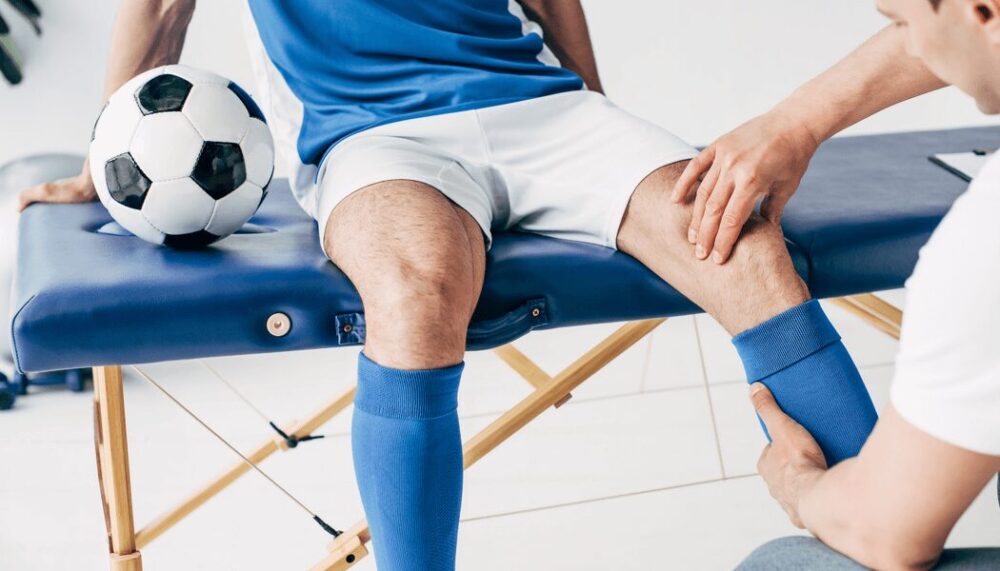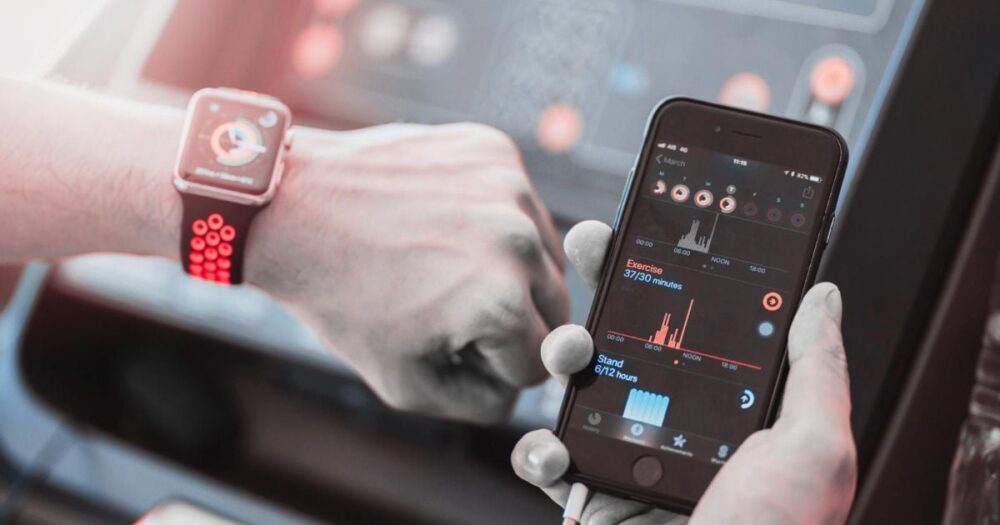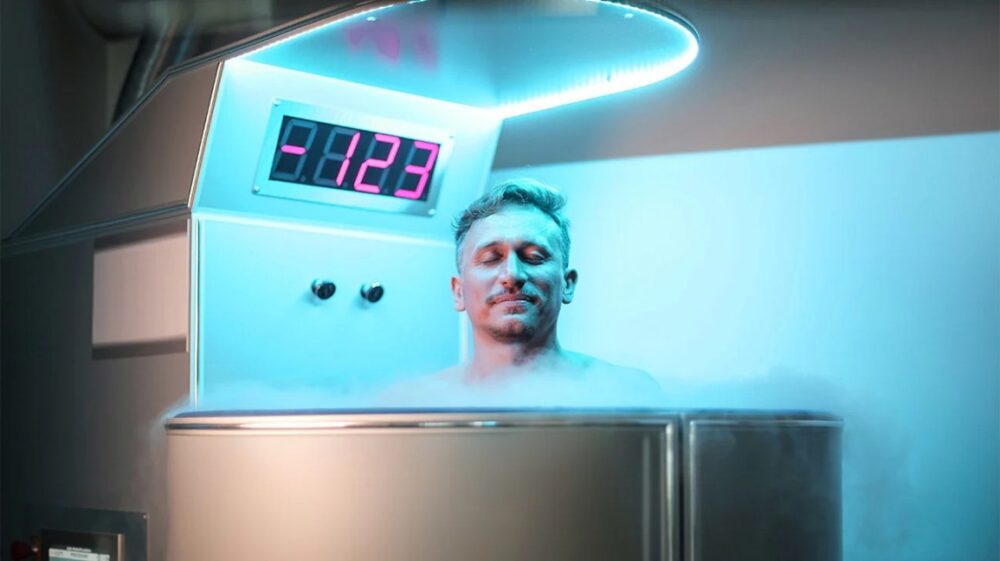
Pain management in professional sports is a critical component of athletic care, balancing the need for peak performance with the imperative to ensure long-term health and well-being.
The cutting edge of this field is continuously evolving, incorporating advanced technologies, innovative therapeutic modalities, and comprehensive approaches to treat and manage pain effectively. This detailed examination explores the latest advancements and techniques that are transforming pain management in sports.
Table of Contents
Multidisciplinary Approaches

Modern pain management in professional sports adopts a multidisciplinary approach, engaging a team of experts, including physicians, physiotherapists, sports psychologists, and nutritionists.
This team collaborates to create a holistic treatment plan that addresses not only the physical aspects of pain but also the psychological and nutritional factors that can influence an athlete’s recovery and performance. This approach ensures that all underlying causes of pain are addressed, facilitating a more effective and sustainable recovery.
Personalized Pain Management Strategies
As the field advances, there is a significant shift towards personalized medicine in sports pain management. Athletes are increasingly undergoing detailed genetic, physiological, and biomechanical evaluations which help in identifying the most effective treatment protocols for their specific conditions.
For example, genetic testing can reveal variations in pain perception and anti-inflammatory responses, which can tailor pain management strategies, optimizing treatment outcomes and minimizing side effects.
Technological Innovations
Wearable Technology

Wearable technology plays a pivotal role in modern sports pain management. Devices like smartwatches, sensor-equipped clothing, and skin patches collect data on an athlete’s heart rate, sweat composition, and motion patterns. This data helps in monitoring the severity of pain, the effectiveness of treatment, and the athlete’s response to various loads during recovery. Such real-time data is invaluable for adjusting treatments quickly and effectively.
Virtual Reality (VR)
Virtual Reality (VR) is increasingly used for pain management and rehabilitation in sports. VR systems can simulate environments for athletes to engage in visualized practice, which distracts from pain and has been shown to reduce its perception. Moreover, VR can be used for cognitive-behavioral therapy, which helps athletes develop coping strategies for chronic pain, enhancing their mental resilience and ability to manage pain.
Advanced Pharmacologic Treatments

While the reliance on traditional NSAIDs (Non-Steroidal Anti-Inflammatory Drugs) and opioids is reducing due to their potential for adverse effects and dependency, newer pharmacological treatments offer promise.
These include topical agents with fewer systemic effects, and biologics that target specific molecular pathways involved in inflammation and pain. Furthermore, developments in drug delivery systems, such as targeted injections and time-release capsules, provide longer-lasting relief with fewer side effects.
Regenerative Medicine Techniques
Regenerative medicine is revolutionizing pain management in sports through techniques such as stem cell therapy and platelet-rich plasma (PRP) injections. These treatments aim to repair and regenerate damaged tissues, not just alleviate symptoms. By promoting the body’s natural healing processes, they offer potential long-term solutions to chronic injuries and pain, which are common in professional sports.
Integrative and Complementary Therapies
Acupuncture and Dry Needling

Acupuncture and dry needling are gaining acceptance for their effectiveness in managing pain and facilitating muscle recovery. These practices involve inserting needles into specific points on the body to release muscle tension and improve blood flow, which can significantly alleviate pain.
Massage and Manual Therapies
Advanced massage techniques and manual therapies such as soft tissue mobilization and spinal manipulation are widely used to manage pain. These methods help in reducing muscle stiffness, improving mobility, and alleviating pain, making them essential tools for athletes’ recovery.
Cryotherapy and Thermotherapy

Innovations in cryotherapy and thermotherapy are crucial in acute and chronic pain management. Cryotherapy reduces inflammation and pain sensation through extreme cold, while thermotherapy uses heat to relieve muscle stiffness and pain. New portable technologies allow athletes to use these therapies more regularly, providing consistent pain relief and recovery support.
Ketamine Therapy
Adding to the spectrum of innovative pain management solutions is ketamine therapy, which has emerged as a potent option, particularly for its rapid-acting properties in treating chronic pain and depression—conditions that frequently co-occur with chronic pain. Originally used as an anesthetic, ketamine now offers therapeutic benefits in sub-anesthetic doses, which can alter the way the brain processes pain signals.
This therapy takes place in ketamine clinics in San Diego and is particularly advantageous for athletes who have not responded well to traditional pain management strategies. Administered under medical supervision, ketamine therapy can provide significant relief, reduce symptoms, and help athletes manage pain more effectively during their recovery phases.
Psychological Interventions

Understanding and managing the psychological aspects of pain are as crucial as addressing its physical dimensions. Sports psychologists employ techniques like cognitive-behavioral therapy to help athletes cope with pain. These strategies not only aid in managing pain perception but also help athletes adjust their attitudes and expectations regarding recovery, which can significantly influence their rehabilitation process.
Nutritional Support
Nutrition also plays a vital role in pain management. Anti-inflammatory diets rich in omega-3 fatty acids, antioxidants, and phytonutrients can help reduce inflammation and promote healing. Sports nutritionists work closely with athletes to tailor diets that support their specific needs during recovery, providing both pain relief and necessary nutrients to enhance healing.
Future Directions
The future of pain management in professional sports is poised for substantial advancements, with increased integration of genetic and molecular diagnostics playing a pivotal role.
This evolution will allow for further personalization of therapies, catering more precisely to individual athlete’s genetic makeup and specific physiological needs. There will also be a greater emphasis on non-pharmacological treatments, reflecting a growing trend toward holistic and preventive approaches.
Ongoing research into biofeedback mechanisms will enhance understanding of the body’s natural pain response systems, potentially leading to more effective management techniques that leverage these innate processes.
Additionally, the development of new regenerative medicine approaches, such as advanced stem cell therapies and tissue engineering, will offer revolutionary methods to heal and rebuild injured tissues.
The exploration of alternative therapeutic modalities, including novel uses of existing pharmacological agents and cutting-edge technological interventions, will further diversify and enhance the arsenal of tools available for pain relief and recovery in athletes.
These efforts combined are expected to significantly advance the efficacy and scope of pain management strategies in the sporting world.







